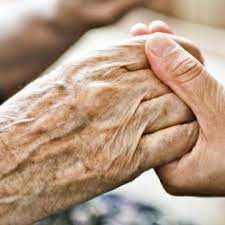Geriatric Dermatology
Want help to write your Essay or Assignments? Click here
Introduction
There is an increased focus on geriatric dermatology due to the growing trend towards aging populations in several countries across the globe. Elderly individuals are predisposed to many dermatological conditions as a result of senile changes in their skin. Although sometimes skin problems seem to be minor compared to major chronic diseases frequently seen in elderly patients, proper diagnosis and management aids in reducing the morbidity and influences positively their quality of life.
How to Properly Diagnose Skin Wounds in Frail Elders
Diagnosis is based on patient history. It is also founded on physical examination whereby a physician inspects the appearance of the condition, mode of distribution, arrangement and configuration, size of individual lesion, color. Surface characteristics such as rough, smooth, waxy or warty, and shape which can either be oval, round, or linear. Diagnostic tests can also be carried our such as skin scrapings that are important in detecting fungal infections, skin prick tests for allergies, and skin biopsies.
In an infection, germs are present in the body and are responsible for signs and symptoms such as pus from wounds, fever, and increased leukocyte count. Conversely, in colonization germs are present in the body but the patients do not present any signs and symptoms.
Type of Skin Wound
I selected herpes. This is an infection caused by the herpes simplex virus. Individuals with this infection have sores anywhere on their skin. Usually, it occurs around the nose, mouth, genitals, and buttocks. The infection is a painful experience, embarrassing and recurs time after time. Herpes is generally associated with genital herpes. However, herpes is actually a term referring to a family of viruses ranging from Epstein-Barr virus (causes infectious mononucleosis), varicella zoster virus (causes shingles), herpes virus 1/HSV-1, to herpes virus 2 HVS-2. Under a microscope, HSV-1 and HSV-2 look identical. Either type can infect the genitals and the mouth.
Herpes simplex has been ranked as one of the most common infections with approximately one out every five individuals in US having HSV-2 and about half to three quarter of all adults having a positive test for HSV-1. However, just ten percent of exposed persons get visible sores.
During the infection, the viruses, HSV-1 and HSV-2, traverse into the nerves where they blend with the DNA forcing the body to make copies of them so that they can be spread easily to other people. However, the body’s immune system attacks the viruses and the products overcoming them. In individuals with a weakened immune system, the virus traverses to the skin where it leaks out in tiny blisters that are painful, burning or unusually tender.
Herpes infection is severe in individuals whose immune system is weak such as children and the elderly. Often, it is a mild infection in that it goes unnoticed in majority of the people who are infected. The infected persons perceive the infections as normal skin irritation or chaffing. However, HSV can recur years later and be mistaken as an initial attack resulting in unfair accusations of infidelity between partners.
Want help to write your Essay or Assignments? Click here
Treatment
Anti-viral pills such as acyclovir, famyclovir, and valacyclovir are used in treatment herpes. Topical application ointments also help in reducing the healing time as well as the duration of symptoms. Some of the topical applications that are prescribed include penciclovir, acyclovir, and docosanol cream.
There are several risk factors in geriatric dermatology that can predispose one to developing herpes. Some of these factors include, a history of a prior sexually transmitted infection, engaging in sexual intercourse at an early age, having several sexual partners, and poor socioeconomic status. Research by Bernstein et al., (2013) indicated that HSV-2 is transmitted easily from men to women than vice versa. This explains why females have a high likelihood of developing HSV-2 infection than men. Individuals whose immunity is compromised such as patients with HIV are also at a high risk of acquiring herpes infection.
Prevention
Herpes is a contagious infection whose prevention before and after an outbreak is of great significance. If signs of recurrence such as itching, tingling, burning or tenderness are felt at any area of the body, then that area should be kept away from other people. Patients that have mouth lesions should avoid sharing cups, lip makeup, or kissing. Sharing of towels and clothing should be avoided strictly.
Avoidance of sexual activity among patients with genital herpes is an important intervention. Sharing of sexual toys should also be avoided highly as they may promote transmission of herpes. Use of condoms is the most effective intervention of preventing herpes transmission. Partners should also go for medical check-ups in case one of them experiences herpes symptoms.
Conclusion
Individuals who have had the infection should maintain general good health and keep stress as low as possible to lit chances of having recurrences which fortunately are milder than the initial attack. Infected patients should take care of the affected skin area by keeping it dry and clean during outbreaks to facilitate healing. Physical contact should be avoided until all skin sores heal completely, not just scabbed-over.
If one touches a sore he/she should wash hands thoroughly with soap and water failure to which the hands can transmit the virus to other body parts such as eyes causing herpes keratitis a condition that causes pain and sensitivity to light and is accompanied with discharge. Geriatric dermatology practice has to be by professional who have studied and understand their geriatric patients.
Reference
Bernstein, D. I., Bellamy, A. R., Hook, E. W., Levin, M. J., Wald, A., Ewell, M. G., & Belshe, R. B. (2013). Epidemiology, clinical presentation, and antibody response to primary infection with herpes simplex virus type 1 and type 2 in young women. Clinical Infectious Diseases, 56(3), 344-351.
Want help to write your Essay or Assignments? Click here









